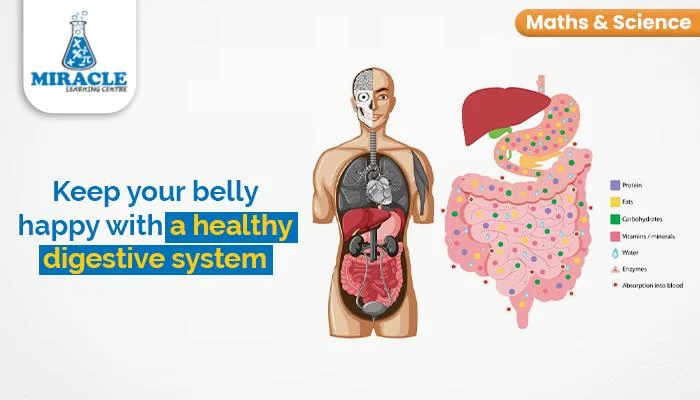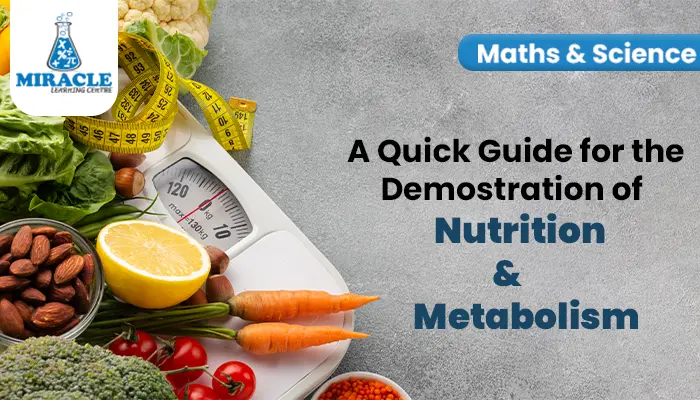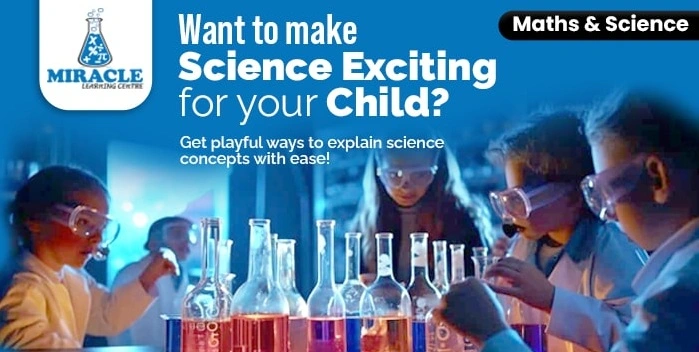Every day, an amazing process in our bodies called digestion allows us to transform the food we eat into the vital elements that sustain our existence. It is a comprehensive and complicated system in which numerous organs and enzymes collaborate. Students that study science gain important insights into the complexities of the natural world through their education. It gives students the information and resources they need to solve scientific puzzles. It can be nothing short of amazing to receive advice from a respected science tuition center when it comes to understanding the complexity of science. At Miracle Learning Centre, we are conscious of the important role that education plays in fostering young minds and a deep respect for the wonders of the world.
We will delve into the interesting world of digestion in this blog and examine the functions, parts, and how our existence is supported by the digestive system. So let's get started.
What Is Digestion?
Digestion is the process by which our bodies convert the food we eat into simpler substances that can be absorbed and utilized by our cells. It begins in the mouth as we chew our food and continues throughout the entire digestive tract, ultimately resulting in the absorption of nutrients and the elimination of waste. This process is crucial for maintaining our health and ensuring our bodies receive the necessary nutrients, vitamins, and minerals.
The Basics of the Digestive System and how it works?
The digestive system is a complex and coordinated network of organs and tissues designed to perform specific roles in the digestion process. It can be divided into two main components: the alimentary canal (also known as the gastrointestinal tract) and accessory digestive organs.
The Alimentary Canal:
Mouth:
Digestion begins in the mouth with the mechanical breakdown of food through chewing and the chemical breakdown with the help of saliva. Saliva contains enzymes, such as amylase, that start the process of breaking down carbohydrates.
Pharynx and Esophagus:
After chewing, the food is formed into a bolus and swallowed. It travels down the throat (pharynx) and into the esophagus, which acts as a transport tube that moves the food to the stomach through a process called peristalsis.
Stomach:
In the stomach, food is mixed with gastric juices containing hydrochloric acid and pepsin. These substances help break down proteins and continue the digestion process. The stomach's churning motion further mixes food with digestive juices, forming a semi-liquid mixture called chyme.
Small Intestine:
The majority of digestion and nutrient absorption occurs in the small intestine. Here, the pancreas releases digestive enzymes, and the liver secretes bile, both of which aid in breaking down fats, proteins, and carbohydrates. Villi and microvilli in the small intestine increase the surface area for efficient absorption of nutrients into the bloodstream.
Accessory Digestive Organs:
Liver:
The liver produces bile, a greenish fluid that emulsifies fats, making them easier to digest in the small intestine. Bile is stored in the gallbladder before being released into the small intestine when needed.
Pancreas:
The pancreas plays a crucial role by releasing digestive enzymes (lipase, protease, and amylase) into the small intestine to further break down nutrients. Additionally, it produces insulin, a hormone that regulates blood sugar levels.
Gallbladder:
The gallbladder stores and releases bile into the small intestine to aid in fat digestion.
The Digestive Process
The process of digestion can be summarized in six key steps:
- Ingestion: The intake of food through the mouth.
- Propulsion: The movement of food through the digestive tract, which involves swallowing and peristalsis.
- Mechanical Digestion: The physical breakdown of food into smaller pieces, starting in the mouth with chewing and continuing in the stomach through churning.
- Chemical Digestion: The chemical breakdown of complex molecules into simpler ones through the action of enzymes and digestive juices.
- Absorption: The uptake of nutrients by the cells lining the small intestine.
- Elimination: The removal of undigested food waste from the body through the rectum and anus as feces.
How Science Tuition Helps Students Understand Digestion
Understanding the intricacies of digestion and the digestive system can be challenging for students. Science tuition plays a pivotal role in helping students grasp the intricacies of digestion. It provides students with specialized guidance and resources that simplify complex scientific concepts. That's where our science tuition centre, Miracle Learning Centre, comes into play. We offer a structured and engaging curriculum designed to make complex scientific concepts accessible to students of all ages.
Here's how our science tuition centre assists students in comprehending the digestion system:
Expert Guidance: Our experienced tutors provide expert guidance, explaining the scientific principles behind digestion in a clear and concise manner.
Interactive Learning: We employ interactive teaching methods, such as experiments and visual aids, to make the learning process engaging and memorable.
Customized Learning: We tailor our teaching to meet the individual needs of each student, ensuring they grasp the concepts at their own pace.
Practice and Revision: Regular practice and revision are key to mastering any subject. We offer ample opportunities for students to reinforce their understanding of digestion through exercises and assessments.
So, if you're eager to master the intricacies of digestion, our science tuition centre at Miracle Learning Centre is your pathway to success. Join us today, and let's explore the wonders of science together!
Conclusion
The digestive system is a remarkable and intricate network that ensures our bodies receive the nutrients and energy required for survival and proper functioning. Understanding the process of digestion and the role of each component in the digestive system is essential for maintaining good health.
At Miracle Learning Centre, we harness the power of education to empower individuals with knowledge about their bodies and the world around them. Just as we've unraveled the mysteries of digestion in this blog, our science tuition centre is dedicated to unlocking the wonders of science for our students. Join our science tuition classes at Miracle Learning Centre and embark on your journey towards scientific enlightenment.








